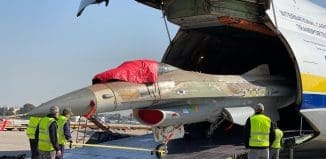64 Year Old Civilian Randomly Ejected from Fighter Jet

This post is also available in:  עברית (Hebrew)
עברית (Hebrew)
A pilot’s ejection seat is a system designed to rescue the pilot in an emergency. Reserved as a last stand attempt to survive, a pilot should only pull the ejection seat handle if there is literally nothing else he could do to save the aircraft and himself.
Ejecting out of a cockpit is not an easy thing to experience, most people who have ejected out of a cockpit have found themselves flying vertically away from the aircraft at speeds of around 20 meters per second, causing the pilot to feel about 14 Gs of acceleration during. A 64 year old french civilian has experienced just that recently.
This all happened in the Saint Dizier French Air Base in northeastern France, where an unidentified 64 year old man was awarded the privilege of a fly-along in a Rafale B fighter jet, a treat that is usually reserved for elected officials or members of the media in order to show off some of the jets capabilities.
The 64 year old, who does not belong to the French Ministry of Armed Forces, got shot up over 30 meters above the ground when his ejector seat randomly went off during takeoff. The man suffered back injuries but was considered to be in stable condition once he arrived at the hospital.
Multiple investigations were opened after the incident, and all non-operational flights of the Rafale jets were suspended until further notice. Militarytimes.com reports that the passenger was likely to receive a detailed briefing on what to touch and not to touch, the ejector handle being something you should definitely not touch.
It is unclear whether the error was due to the passenger disobeying orders, or if it was simply due to a random error in the jet’s ejector seat components.
Most ejector seats work in two phases. The first phase is when the ejection handle is pulled, the jet’s canopy breaks open, and the jet’s passenger flies out. The seat is propelled upwards usually with the help of controlled explosives or rockets.
The second phase of ejection involves the parachute opening and the seat falling slowly to the ground. The parachute needs to be able to deploy in the scenario of a zero-zero ejection, meaning zero altitude and zero air speed. For a zero-zero ejection to be successful the seat has to be launched high enough into the sky so that the parachutes could deploy successfully, so the propulsion of the seat needs to be strong and fast enough to launch the ejecting pilot high into the air and quickly away from the damaged jet. This sudden rise in acceleration is most likely what caused the 64 year old’s back injuries.
Luckily, the pilot in the incident only sustained minor injuries to his hand due to the canopy glass breaking during ejection. He was later able to safely land the aircraft.
Below you can see an ejector seat in action. The first ejection uses an older method of launching the seat and the second uses rocket propulsion.






























